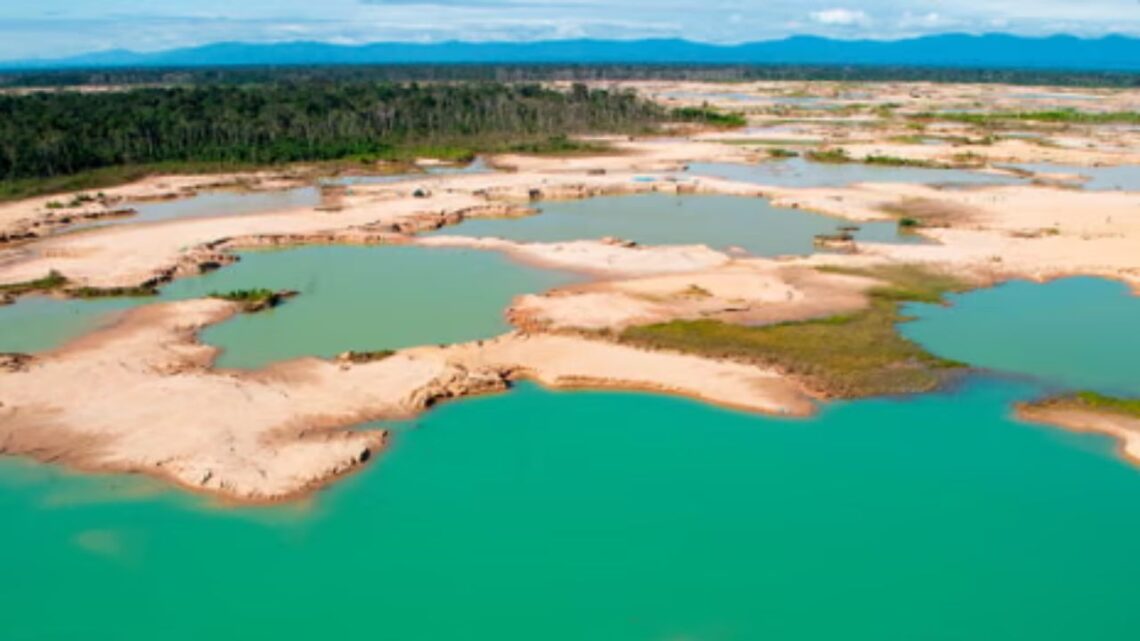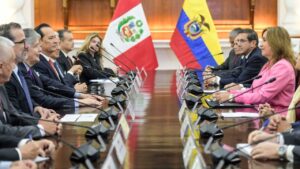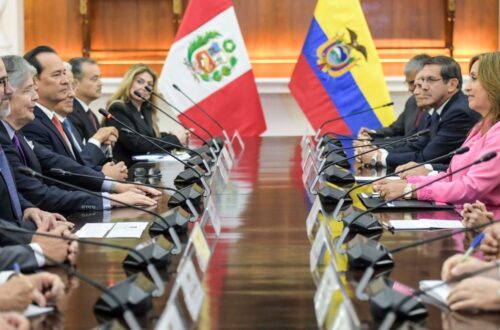The Peruvian Amazon is facing one of its worst environmental crises in history. An illegal gold rush has destroyed nearly 140,000 hectares of rainforest, leaving behind barren landscapes, polluted rivers, and devastated communities.
What began decades ago as small-scale prospecting has turned into a massive, organized operation fueled by record-breaking gold prices and weak government enforcement.
The destruction is spreading rapidly across the country, transforming once-lush rainforests into toxic wastelands.
The Scale of Devastation
| Category | Details |
|---|---|
| Total forest area lost | 140,000 hectares (540 square miles) |
| Number of rivers affected | 225 rivers and streams |
| Dredges spotted since 2017 | Nearly 1,000, with 275 added this year |
| Major hotspot | Madre de Dios region in southern Peru |
| Newly affected areas | Loreto, Amazonas, Huánuco, Pasco, Ucayali |
| Mercury contamination level | Nearly 4× higher than WHO safe limits in river communities |
These figures reveal the massive scale of the gold rush and its devastating environmental footprint. What was once concentrated in a few southern areas has now expanded northward, consuming rivers, forests, and Indigenous territories.
The Gold Price Boom and the Rush for Profit
The price of gold recently surged past $4,000 per ounce, triggering a frenzy across Peru’s Amazon. Small-scale miners and organized criminal groups are seizing the opportunity to exploit the crisis for fast profits.
The profits from a single dredge can reach more than $100,000 per month, making it one of the most lucrative illegal industries in the region.
However, this economic gain comes at a staggering cost. Riverbeds are being torn apart, trees uprooted, and wildlife driven from their habitats. The record-high global gold prices have become the spark for a new wave of environmental destruction.
The Environmental Toll
1. Deforestation and Landscape Loss
Vast stretches of dense rainforest have turned into barren moonscapes—gray soil, stagnant pools of contaminated water, and lifeless terrain where vibrant biodiversity once thrived. The Amazon’s critical role in regulating the climate and storing carbon is being irreversibly damaged0.
2. Mercury Pollution in Rivers
To extract gold, miners use mercury, a highly toxic metal. Dredges churn up riverbeds, mixing mercury into the water. The result is widespread water contamination, threatening fish populations and poisoning the food chain.
Studies in the northern region of Loreto show mercury levels four times higher than safe health limits among local populations.
3. Impact on Wildlife
Species such as macaws, jaguars, river dolphins, and giant otters are losing their habitats. The noise and pollution from mining operations drive animals away, while mercury affects reproduction and survival rates of aquatic species.
Human and Social Impacts
The human cost is equally devastating. Mercury poisoning leads to neurological disorders, birth defects, and learning disabilities in communities that rely on fish for survival. Children and pregnant women are most at risk.
In regions such as Loreto and Madre de Dios, armed groups have clashed with Indigenous communities defending their lands. Several Indigenous leaders have reported gunfights and threats from illegal miners who enter their territories without consent.
Locals say they are forced to defend their rivers and forests alone, as government presence in these remote areas is minimal.
Meanwhile, criminal organizations linked to drug trafficking are expanding into illegal gold mining, using it as a method to launder profits and control territory.
The Expanding Frontiers of Destruction
Illegal gold mining, once limited to southern Peru, is now expanding northward. New hotspots are emerging across multiple regions:
- Loreto: Massive river mining operations along the Nanay and Tigre rivers.
- Huánuco and Ucayali: Increasing encroachment into Indigenous reserves.
- Pasco and Amazonas: Forest corridors now under threat from expanding dredge fleets.
- Border zones: Foreign armed groups from Brazil and Colombia are crossing into Peruvian territory to exploit gold-rich rivers.
Experts warn that if left unchecked, this expansion could double the current deforested area within the next decade.
Health, Crime, and Governance Challenges
Peru’s government faces an uphill battle. While past initiatives like Operation Mercury briefly curbed illegal mining, enforcement has weakened over time. Remote jungle regions remain difficult to patrol, and corruption further undermines control.
The result is a toxic triangle of high gold prices, organized crime, and weak regulation—a perfect storm fueling environmental collapse.
Public health services are overwhelmed, and many river communities have no access to clean drinking water or medical testing for mercury exposure.
The Road Ahead: What Must Be Done
- Stronger enforcement against illegal dredges and mercury trafficking.
- International cooperation with neighboring countries to control cross-border mining.
- Traceable gold supply chains, ensuring buyers know the source of their gold.
- Support for Indigenous defenders who risk their lives to protect their lands.
- River restoration and reforestation projects to heal destroyed areas.
- Public health monitoring to treat mercury exposure in affected communities.
The illegal gold rush in Peru’s Amazon is not just an environmental crisis—it is a humanitarian and ecological emergency. With 140,000 hectares lost, rivers poisoned, and Indigenous communities under attack, the stakes have never been higher.
Unless immediate action is taken to enforce laws, reduce demand for illegal gold, and support those defending the forest, the Peruvian Amazon could face irreversible damage.









